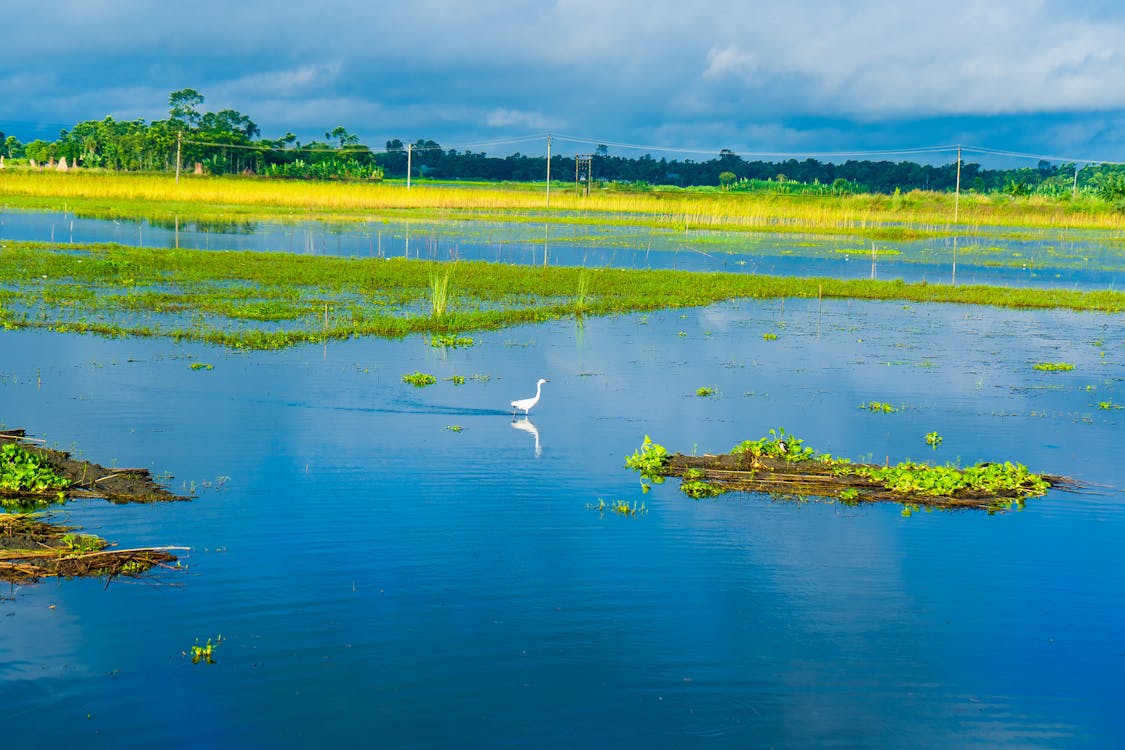Pure water assets are invaluable to residing organisms, and nobody can deny it. Sadly, the state of those assets may be very dire in the intervening time.
As reported by CNN, a number of rivers internationally are drying up resulting from excessive climate. These embrace the River Po, the Rhine River, and the Colorado River.
Additionally, analysis revealed in Science reveals that greater than 50 % of the world’s lakes are drying up. World warming and human consumption are contributing vastly to this.
Underneath such circumstances, there’s a rising want to make sure the sustainable use of pure water assets. Right here’s how a lot sustainability will be ensured whereas preserving our pure water our bodies and assets.
#1 Rainwater Harvesting
Rainwater harvesting, an age-old custom, entails the buildup of rainwater runoff from rooftops, surfaces, or numerous catchment areas. This simple but environment friendly technique presents a number of benefits for people and communities alike.
By capturing rainwater, households can scale back their reliance on centralized water provides, significantly in areas vulnerable to drought or water shortage. Rainwater harvesting programs range from easy rain barrels to superior assortment tanks outfitted with filtration mechanisms.
Furthermore, based on analysis revealed on MDPI, rainwater harvesting helps alleviate stress on stormwater drainage programs, decreasing the danger of flooding and soil erosion. In city areas, integrating rainwater harvesting into constructing design can promote sustainable water administration whereas enhancing resilience to local weather change.
#2 Aquifer Recharge
Groundwater, saved in underground aquifers, serves as a significant supply of consuming water and irrigation for thousands and thousands of individuals worldwide. Nevertheless, extreme pumping and overexploitation have depleted many aquifers, jeopardizing water availability and high quality.
Aquifer recharge, the method of replenishing groundwater provides, gives a sustainable resolution to this problem. Pure recharge happens via the infiltration of precipitation and floor water into the bottom, however human interventions can improve this course of.
Managed aquifer recharge (MAR) entails intentionally directing floor water or handled wastewater into aquifers, replenishing groundwater reserves. This method helps preserve ecological steadiness, helps sustainable agriculture, and safeguards water provides for future generations.
Efficient administration and diligent monitoring are essential for making certain the success and long-term viability of aquifer recharge initiatives. This turned significantly crucial following the Camp Lejeune water contamination incident.
In response to TorHoerman Regulation, the groundwater at Marine Corps Base Camp Lejeune in North Carolina skilled contamination between 1953 and 1987. This uncovered many locals to dangerous chemical substances, inflicting most cancers in a number of of them. The Camp Lejeune victims in the end filed the Camp Lejeune lawsuits, which later led to the Camp Lejeune Justice Act.
Presently, the Camp Lejeune payout quantities could possibly be between $10,000 and $1,000,000. Aside from the severity of the incident itself, the Camp Lejeune case makes it evident that groundwater contamination may occur at any time. Thus, we should be additional cautious with how we protect this invaluable water useful resource.
#3 River Restoration
Rivers and streams are lifelines for ecosystems and human societies, offering water for consuming, agriculture, trade, and recreation. Nevertheless, a long time of dam development, channelization, and air pollution have degraded many rivers, impairing their ecological integrity and diminishing their capability to help biodiversity.
River restoration initiatives search to revive and rehabilitate degraded riverine ecosystems, restoring pure processes and habitats whereas selling sustainable water use. Restoration measures might embrace eradicating out of date dams, restoring riparian vegetation, reconnecting floodplains, and bettering water high quality via air pollution management measures.
Restored rivers profit not solely aquatic species but in addition surrounding communities, providing alternatives for ecotourism, fishing, and cultural enrichment. Furthermore, wholesome rivers contribute to panorama resilience, mitigating the impacts of floods, droughts, and local weather variability.
#4 Wetland Restoration
Wetlands, together with marshes, swamps, and mangrove forests, play an important function in regulating water circulate, filtering pollution, and supporting various ecosystems. Nevertheless, wetlands worldwide face threats from urbanization, air pollution, and habitat loss, compromising their means to offer important ecological companies.
Wetland restoration initiatives purpose to reverse these tendencies by rehabilitating degraded wetland areas and enhancing their ecological operate. By restoring pure hydrological processes, comparable to water retention, wetland restoration initiatives can enhance water high quality, mitigate floods, and supply habitats for wildlife.
Steadily Requested Questions (FAQs)
What are the advantages of sustainable water administration?
Sustainable water administration reduces waste and conserves this finite useful resource. This, in flip, helps safe the supply of water for future generations.
Why are lakes and rivers drying up?
The depletion of water ranges in lakes worldwide is attributed to each local weather change and human actions. Elevated temperatures speed up evaporation charges, whereas shifting precipitation patterns result in droughts or extreme rainfall, impacting the degrees of lake water.
What are the issues attributable to the shortage of fresh water?
Contaminated water and substandard sanitation services facilitate the transmission of ailments comparable to cholera, diarrhea, dysentery, hepatitis A, typhoid, and polio. Insufficient or improperly managed water and sanitation companies topic people to avoidable well being dangers.
In abstract, sustainable utilization of pure water assets is important for safeguarding ecosystems, supporting human well-being, and adapting to local weather change. By adopting the practices mentioned above, we are able to harness the inherent resilience of pure water programs whereas minimizing environmental impacts.
Nevertheless, attaining sustainable water administration requires collaboration, innovation, and a holistic method that integrates social, financial, and ecological concerns. By concerted efforts at native, regional, and world scales, we are able to guarantee sustainable water administration and the supply of fresh water for future generations.

